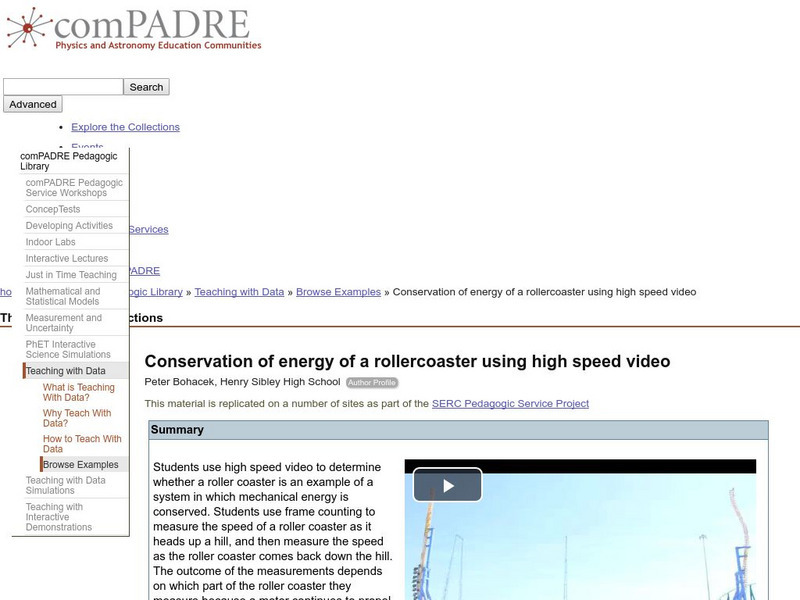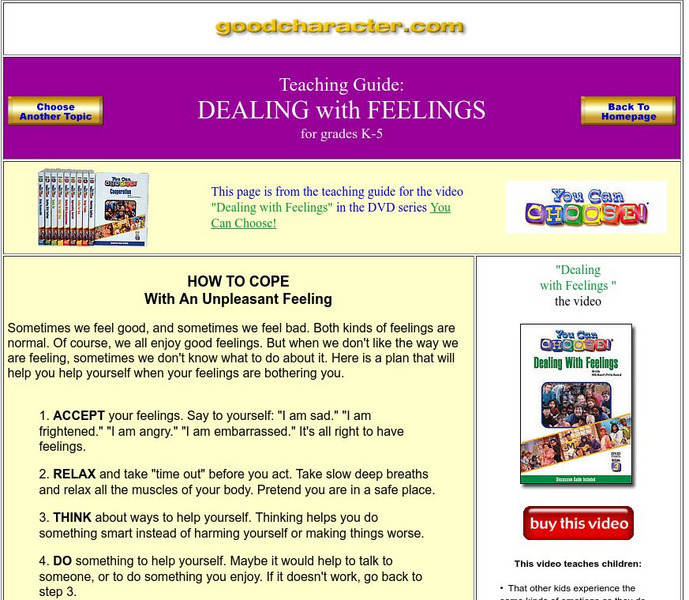Science Buddies
Science Buddies: Paper Roller Coasters: Kinetic and Potential Energy
In this instructional activity, your students will learn about kinetic and potential energy as they build their own roller coasters from simple classroom materials.
TeachEngineering
Teach Engineering: Physics of Roller Coasters
Students explore the physics utilized by engineers in designing today's roller coasters, including potential and kinetic energy, friction, and gravity. First, students learn that all true roller coasters are completely driven by the...
NC State University
The Engineering Place: Roller Coasters [Pdf]
A lesson where learners construct a roller coaster and test it under different conditions to learn about force and motion.
Utah Education Network
Uen: Trb 3:4 Investigation 4 Roller Coaster Fun
Third graders will design and build a roller coaster to help understand gravity.
Discovery Education
Discovery Education: The Ultimate Roller Coaster Contest
Students design and build a three hill "tennis ball" roller coaster made of cardboard. During the design and building process, students explore the concepts of potential and kinetic energy and how they change as the roller coaster...
Utah Education Network
Uen: Tubularastic Roller Coaster
Third graders will understand the effect of gravity on objects.
Alabama Learning Exchange
Alex: This Is How We Roll!
Students take on the role of engineers who need to design a roller coaster. They will explore the history of roller coasters, the different types, and the many things that can affect the success or failure of a roller coaster. Finally,...
Science Education Resource Center at Carleton College
Serc: Investigating Speed and Velocity
In this investigation, young scholars will work in groups to design a model roller coaster, which will be used to clock the fastest speed for the rider (ball bearing/marble) The groups will build roller coaster models and modify and...
Science Education Resource Center at Carleton College
Serc: Conservation of Energy of a Rollercoaster Using High Speed Video
Students use high speed video to determine whether a roller coaster is an example of a system in which mechanical energy is conserved. The activity is intended to give students experience extracting data from video clips, and using...
TeachEngineering
Teach Engineering: Pushing It Off a Cliff
Lesson 2 moves into the Research and Revise step and focuses on the conservation of energy solely between gravitational potential energy and kinetic energy. Students start out with a virtual laboratory, and then move into the notes and...
Better Lesson
Better Lesson: Skate Park Energy
Using computer simulation, students will explore the concept of conservation of energy at a skate park. After the completion of that exercise, students will move to a worksheet about the concepts with a roller coaster. Site includes...
TeachEngineering
Teach Engineering: Kinetic and Potential Energy of Motion
In this lesson, students are introduced to both potential energy and kinetic energy as forms of mechanical energy. A hands-on activity demonstrates how potential energy can change into kinetic energy by swinging a pendulum, illustrating...
Live Wire Media
Good Character: Dealing With Feelings
Learn how to cope with unpleasant feelings, and to teach young students how to deal with their emotions.
Other popular searches
- Roller Coaster Physics
- Slope Roller Coaster
- History of Roller Coasters
- Roller Coaster Math
- Paper Roller Coasters
- Foam Roller Coaster Physics
- Roller Coaster Science
- Roller Coaster Design
- Building a Roller Coaster
- Roller Coaster Ride
- Roller Coaster Forces
- Roller Coaster Marbles









